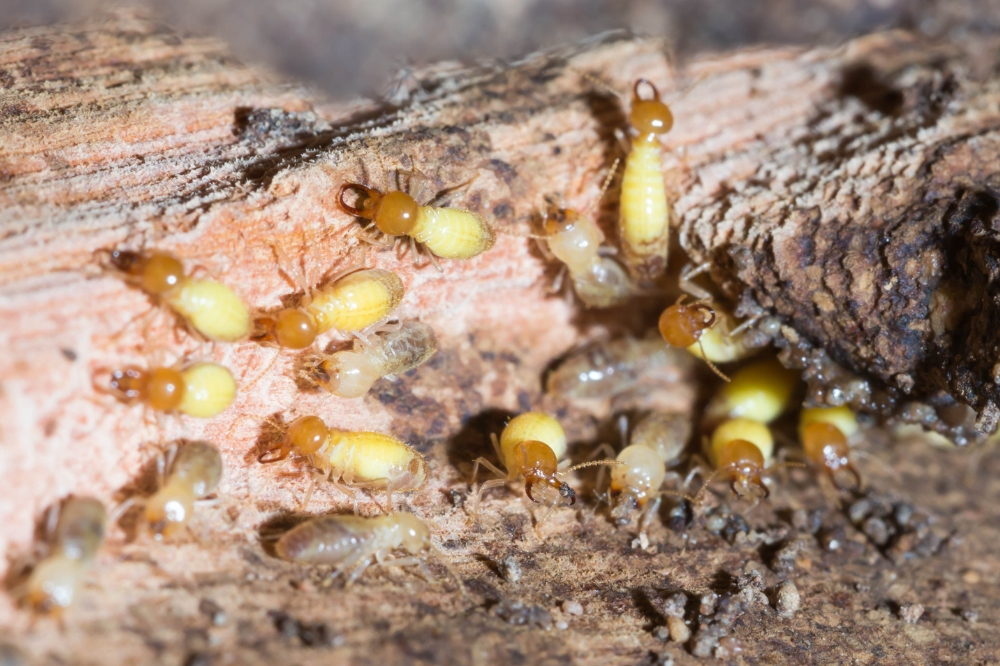The Complete Guide to Professional Termite Control Services

Strong 8k brings an ultra-HD IPTV experience to your living room and your pocket.
Termites are one of the most costly and destructive pests for homeowners. Quietly feasting on wood, drywall, insulation, and even flooring, termites cause billions of dollars in property damage annually—often without being detected until it’s too late. For this reason, professional termite control services are not just a luxury—they're an essential investment in protecting your home.
In this guide, we’ll explore everything you need to know about professional termite control: what these services include, how they work, when to hire them, what it costs, and how to choose the right provider.
Why Professional Termite Control Is Important
Unlike ants or roaches, termites operate mostly out of sight. By the time you see damage—sagging floors, hollow-sounding wood, or discarded wings—the colony may already be well-established.
Professional termite control services are designed to do what DIY efforts cannot:
- Identify hidden infestations
- Determine the type of termites involved
- Treat the entire colony, including the queen
- Prevent future infestations through barriers and monitoring
Trained technicians have the tools, knowledge, and products necessary to eliminate termites at the source, minimizing damage and long-term risk.
When to Call a Termite Control Professional
It’s best to contact a termite specialist at the first sign of an infestation—or earlier, for preventive inspections.
Call a professional if you notice:
- Mud tubes along your foundation or walls
- Discarded wings near doors or windows
- Wood that sounds hollow when tapped
- Termite droppings (frass) that look like sawdust
- Peeling paint that resembles water damage
- Swarms of small, winged insects inside or near your home
Annual inspections are also recommended, especially if you live in a warm or humid climate where termites are common.
Types of Professional Termite Treatments
Professional termite control companies typically offer a range of treatment options, tailored to the type of termite and the structure of your home.
1. Liquid Termiticides (Soil Treatment)
This is one of the most common treatments for subterranean termites. A liquid pesticide is applied in the soil around the home, forming a chemical barrier that either kills or repels termites.
How it works:
- Technicians dig a trench around the perimeter of the home
- Termiticide is applied to the soil or injected through holes drilled in concrete
- The trench is refilled, and treated soil provides long-term protection
Best for: Subterranean termites and homes with existing infestations
Longevity: Typically protects for 5–10 years
2. Termite Bait Stations
Bait stations are installed in the ground around your home. They contain cellulose-based bait laced with slow-acting insecticides that termites carry back to the colony.
How it works:
- Bait stations are strategically placed every 10–20 feet around the foundation
- Termites feed on the bait and spread the poison throughout the colony
- Technicians monitor and refill stations periodically
Best for: Ongoing termite monitoring and colony elimination
Longevity: Requires regular maintenance and monitoring
3. Fumigation (Tenting)
Used mainly for drywood termites, fumigation involves sealing the structure with a tent and filling it with a gas that penetrates all areas of the home to kill termites.
How it works:
The entire building is enclosed in a gas-tight tent
- A fumigant gas (such as sulfuryl fluoride) is pumped in and maintained for 1–3 days
- The structure is then ventilated and declared safe to re-enter
Best for: Severe or widespread drywood termite infestations
Longevity: No residual protection; used to eliminate current infestations
4. Wood Treatments
Technicians may apply a borate-based solution directly to wood during construction or after infestation. These treatments make wood toxic to termites and prevent feeding.
How it works:
Borate solution is sprayed, brushed, or injected into wood
It penetrates the surface and provides lasting protection
Best for: Drywood termites and preventive care in new construction
Longevity: Long-term if wood remains dry and intact
5. Spot Treatments
Localized infestations in accessible areas may be treated with foams, dusts, or liquid pesticides applied directly into termite galleries.
How it works:
- The pest control technician drills small holes into wood or drywall
- A termiticide foam or dust is injected into the galleries
- The entry points are then sealed
Best for: Small, contained infestations
Longevity: Depends on access, application, and follow-up
The Termite Control Process: What to Expect
1. Initial Inspection
A licensed technician will inspect your property thoroughly, including crawl spaces, attics, basements, walls, and foundation. They will identify:
- The type of termite (subterranean, drywood, etc.)
- The location and extent of the infestation
- Moisture issues and entry points
After the inspection, you'll receive a written report and a recommended treatment plan.
2. Treatment Proposal and Estimate
The technician will present treatment options based on your specific situation. This proposal should include:
- Description of the treatment method(s)
- Products to be used and their safety profile
- Cost estimate and warranty terms
- Duration and schedule of treatment
3. Application of Treatment
Depending on the chosen method, this may involve trenching, drilling, tenting, or installing bait stations. Most companies will also provide guidance on:
- Vacating the property if necessary (e.g., during fumigation)
- Post-treatment cleaning and precautions
- How to prevent reinfestation
4. Follow-Up and Monitoring
Some treatments require ongoing maintenance. Bait systems and monitoring stations, for instance, are checked regularly—typically every 3–6 months. Companies may offer annual inspections and warranties that include retreatments if termites return.
Cost of Professional Termite Control
Termite control costs vary based on the size of your property, the type of treatment, and the severity of the infestation. Here's a rough estimate:
- Inspection: Free to $150
- Liquid termiticide treatment: $3–$8 per linear foot
- Fumigation: $1,200–$2,500+ (for a full home)
- Bait station installation and maintenance: $1,500–$3,000+
- Spot treatments: $200–$900 depending on the scope
Many companies offer warranties or retreatment guarantees for an additional fee or as part of the package.
Choosing the Right Termite Control Provider
When selecting a termite control company, consider the following:
- Licensing and Certification: Ensure the company is licensed and certified in your state.
- Experience: Look for providers with a track record in termite control specifically—not just general pest control.
- Reviews and References: Check online reviews and ask for local references.
- Warranty Terms: A reputable company should offer a clear warranty for its work.
- Transparency: You should receive a written contract outlining the treatment, cost, and follow-up procedures.
Don’t be afraid to get multiple quotes and compare services before deciding.
Conclusion
Termites are a serious threat to your home’s structure and value. While DIY methods might help in some cases, professional termite control services offer the expertise and equipment needed to detect and eliminate infestations effectively.
By understanding your treatment options and working with a trusted pest control provider, you can protect your investment, preserve your home, and gain long-term peace of mind. Whether you’re responding to a current infestation or taking proactive measures, a professional approach is your best defense against termites.
Note: IndiBlogHub features both user-submitted and editorial content. We do not verify third-party contributions. Read our Disclaimer and Privacy Policyfor details.


